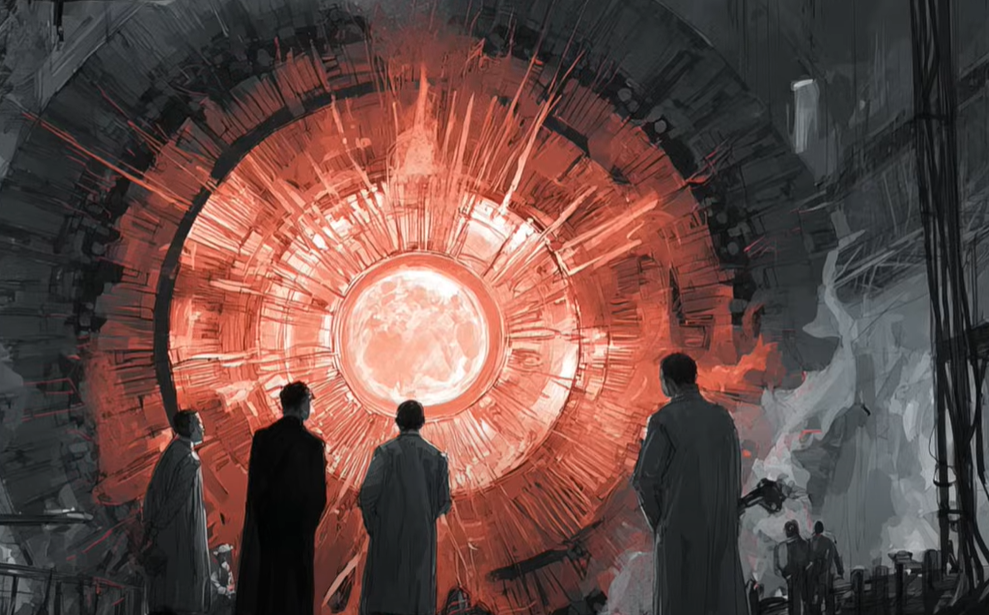**Title: Quantum Whiz Kid Claims CERN’s Experiments Are Behind the Mandela Effect—Is Reality Shifting?**

In a startling revelation that has sent shockwaves through both the scientific community and conspiracy circles, child prodigy Max Laughlin has resurfaced with an explosive theory linking the enigmatic Mandela Effect to the groundbreaking experiments conducted at CERN. This young intellectual, known for his unconventional insights into quantum science and alternate realities, claims that the Large Hadron Collider’s high-energy experiments may be unintentionally warping the very fabric of our reality.
The Mandela Effect—a term that describes the phenomenon where large groups of people remember events or details differently from historical records—has long fascinated both skeptics and believers. Laughlin’s theory posits that the particle collisions at CERN could be creating microscopic rifts in space-time, allowing fragments from alternate dimensions to seep into our own, thus explaining why so many people have shared false memories of events, quotes, and even the lives of public figures.


CERN, the European Organization for Nuclear Research, is known for its ambitious goal of unraveling the mysteries of the universe. The Large Hadron Collider, the world’s most powerful particle accelerator, has made headlines for its discovery of the Higgs boson—the so-called “God particle.” However, Laughlin raises a provocative question: could the immense energy released during these collisions be causing unforeseen consequences that extend beyond our comprehension?
As Laughlin explains, the universe is not a singular reality but a vast tapestry of parallel dimensions, each containing slightly different versions of our world. When particles collide at nearly the speed of light, he suggests, they might create temporary openings between these dimensions, allowing for a blending of memories and experiences. This could account for the collective misremembering that characterizes the Mandela Effect, a phenomenon that has left many scratching their heads and questioning the reliability of their own memories.

While mainstream scientists have largely dismissed Laughlin’s claims, his theory resonates with those intrigued by the intersection of advanced science and the unexplained. The idea that CERN’s experiments could be unintentionally altering human cognition challenges traditional understandings of both physics and psychology. As Laughlin argues, the implications of manipulating the fundamental forces of nature are still not fully understood, and the potential for unintended side effects looms large.

The allure of this theory lies not only in its scientific implications but also in its reflection of a broader cultural unease. Throughout history, rapid advancements in technology and science have often been met with public apprehension. From the development of nuclear energy to the rise of artificial intelligence, society has grappled with the balance between progress and peril. In this context, CERN emerges as a symbol of humanity’s audacious quest for knowledge, but also as a potential harbinger of chaos.
As discussions surrounding Laughlin’s claims gain momentum, some researchers have gone even further, suggesting that the intense energies generated by CERN’s experiments could be influencing human perception on a physiological level. This theory posits that the powerful electromagnetic fields produced during particle collisions might disrupt how individuals process and remember information, leading to widespread instances of what could be termed “mass delusion.”

In a world increasingly shaped by technology and social media, the rapid dissemination of information—and misinformation—has amplified the phenomenon of the Mandela Effect. Online communities have formed around shared experiences of these memory discrepancies, creating echo chambers that reinforce beliefs in alternate realities and dimensional shifts.
While established scientists remain skeptical, the allure of Laughlin’s theory continues to captivate imaginations. As we stand on the precipice of scientific discovery, the question remains: Are we merely observers of reality, or are we actively reshaping it with every experiment conducted at CERN? As the lines between science and speculation blur, the Mandela Effect serves as a reminder of the mysteries that still lie beyond our understanding, inviting us to question the very nature of reality itself.
As the world watches, one thing is clear: the conversation surrounding the Mandela Effect, CERN, and the implications of quantum science is far from over. Whether one views Laughlin’s assertions as visionary or far-fetched, they undeniably spark a dialogue about the unknowns of our universe and the potential consequences of our relentless pursuit of knowledge.
